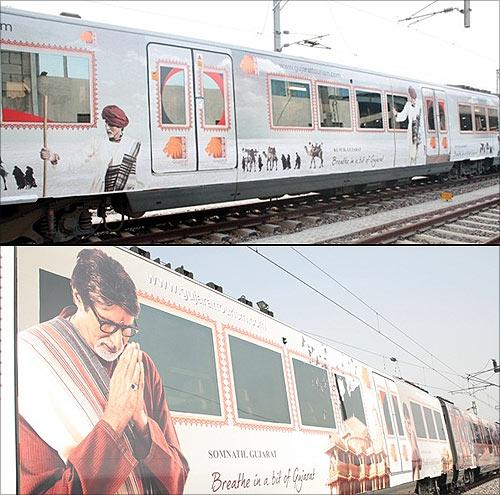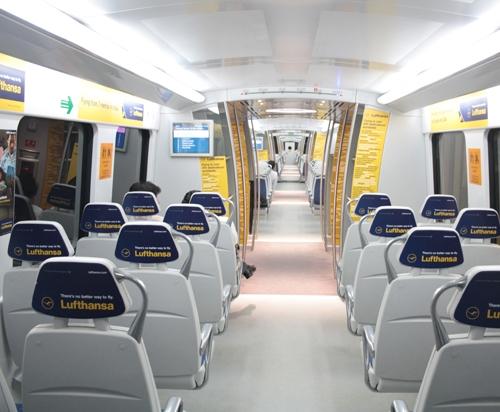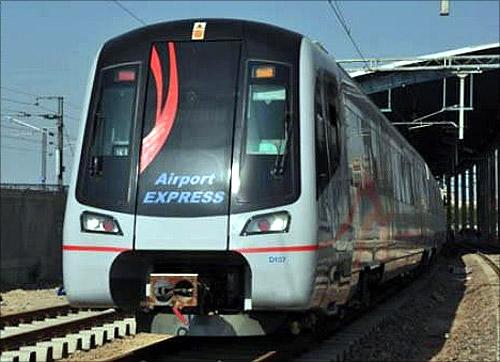Photographs: Courtesy, Reliance Metro. BS Bureau
At one level, the ongoing tussle between the Delhi Metro Rail Corporation (DMRC) and the Anil Ambani-controlled Delhi Airport Metro Express Pvt Ltd (DAMEPL) may confirm the misgivings of those who think public-private partnerships (PPPs) are a risky way of bridging the infrastructure gap.
At another level, it could hold valuable lessons for government agencies in how not to implement PPP projects. The airport metro link collaboration was something of a showcase.
The line was to offer commuters seamless connectivity between the metro network and Delhi airport - ironically, another iconic PPP project that appears to suffer perennial controversies.
...
Lessons from Delhi Airport Metro's crisis
Image: Ticket issuing machines.Less than two years into operation, the line has been closed for safety reasons after cracks were detected in the supporting structure.
After some scathing public argument over who was responsible, DMRC finally got down to the repair work. But even before this is complete, DAMEPL has asked for the project to be financially restructured, saying it is unviable at current traffic estimates.
Its government-owned partner has correctly rejected this request, and the matter has now gone into arbitration.
Any solution should take into account the fact that few airport users want a high-speed link to Connaught Place; perhaps integrating the line with the regular metro service would make more sense.
...
Lessons from Delhi Airport Metro's crisis
Image: Delhi Airport Metro.More generally, attempts at mid-course correction by private partners have become endemic to PPP projects: whether it is airport operators demanding significant increases in passenger fees to cover unexpected losses, Reliance Industries requesting higher capital expenditure for gas production from the Krishna-Godavari basin or the court case over the Delhi-Gurgaon toll plaza.
As for telecom, it runs into regular controversies. Activists like Arvind Kejriwal may see in these problems signs of corporate venality and the crony capitalism inherent in the Indian political economy.
This is one way of looking at the issue. But remember, the suffering of common citizenry is much more when these projects stall.
...
Lessons from Delhi Airport Metro's crisis
Image: Delhi Airport Metro.The countrywide power outages partly resulting from disputes over RIL's Krishna-Godavari project is one example of the problems of inflexible contracts linked to an administered pricing regime.
The huge traffic jams at the Delhi-Gurgaon toll plaza as a result of an egregious underestimate of traffic are another.
The DMRC-DAMEPL imbroglio is another reflection of the weaknesses of unrealistic contracts.
DAMEPL wants a financial restructuring because its bid was based on a revenue model predicated on aggressive ridership estimates of 40,000 commuters a day. At its height, ridership was half that; just before the line closed, it had fallen below 17,000.
...
Lessons from Delhi Airport Metro's crisis
Image: Delhi Airport Metro.Now, as any business leader will attest, all projects suffer problems of over- and under-estimation of costs, revenues and markets. In the chaotic Indian business climate, these risks multiply.
Allow for the scale of infrastructure projects and these serial crises are easy to explain. The fact, however, is that, however flawed, India is too critically short of infrastructure – the estimates rise exponentially each year – and the government too cash-strapped to jettison the PPP model.
The bigger point is whether the government and bureaucracy will choose to learn from these early mistakes or focus on revenue maximisation for both itself and its private partner at the cost of the citizen.
As for the Delhi Airport Metro Express, it makes eminent sense for the government to step in to facilitate its integration with the successfully running Delhi Metro network, so that the existing infrastructure can be put to better use.






article